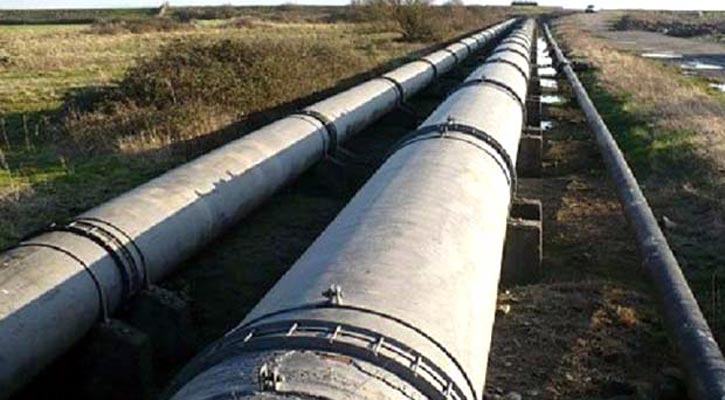The death toll from a devastating glacial lake burst that triggered a torrential flash flood in India has risen to at least 10 people, with 82 others still missing, officials said.
Violent flooding from glacier lakes dammed by loose rock has become more frequent as global temperatures rise and ice melts, with climate scientists warning they pose an increasing danger across the wider Himalayan mountain range.
‘Floodwaters have caused havoc in four districts of the state, sweeping away people, roads, bridges,’ Himanshu Tiwari, an Indian Army spokesman told AFP on Thursday, speaking a day after the wall of water rushed down the mountainous valley in northeast Sikkim state.
Authorities said that roads had been ‘severely’ damaged and that 14 bridges had been washed away.
‘Ten bodies have been recovered so far, and 82 people are missing, including army personnel,’ Sikkim state chief secretary Vijay Bhushan Pathak told reporters late Wednesday.
The water surge came after intense rainfall burst the high-altitude Lhonak Lake, which sits at the base of a glacier in peaks surrounding the world’s third-highest mountain, Kangchenjunga.
The wall of water powered downstream, adding to a river already swollen by monsoon rains, damaging a dam, sweeping away houses and bridges, and causing ‘serious destruction’, the Sikkim state government said.
Damage was recorded more than 120 kilometres (75 miles) downstream, and Prime Minister Narendra Modi has promised ‘all possible support’ for those impacted.
Lhonak Lake shrunk by nearly two-thirds in size, an area roughly equivalent to about 150 football pitches (105 hectares), satellite photographs released by the Indian Space Research Organisation showed.
Himalayan glaciers are melting faster than ever due to climate change, exposing communities to unpredictable and costly disasters, according to the International Centre for Integrated Mountain Development (ICIMOD) research group.
‘Intense rain has led to this catastrophic situation in Sikkim where the rain has triggered a glacial lake outburst flood and damaged a dam, and caused loss of life’, said Miriam Jackson, a scientist specialising in ice who monitors Himalayan regions with the Nepal-based ICIMOD.
‘We observe that such extreme events increase in frequency as the climate continues to warm and takes us into unknown territory.’
Earth’s average surface temperature has risen nearly 1.2 degrees Celsius since preindustrial times, but high-mountain regions around the world have warmed at twice that pace, climate scientists say.
Sikkim is close to India’s border with Nepal and China, and boasts a sizeable military presence.
India has been wary of China’s growing military assertiveness and their 3,500-kilometre (2,200-mile) shared frontier has been a perennial source of tension, with parts of Sikkim claimed by Beijing.





















